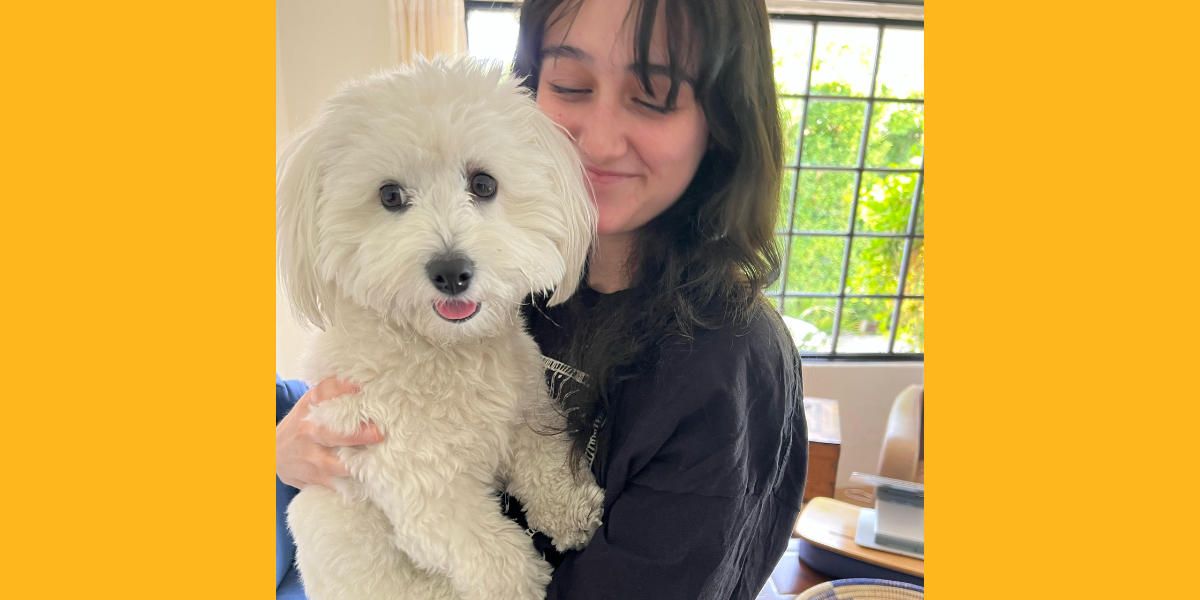A dire diagnosis
Gastrointestinal bleeding puts a puppy into intensive care and a fight for her life as veterinarians work to uncover the cause

Gastrointestinal bleeding puts a puppy into intensive care and a fight for her life as veterinarians work to uncover the cause
Isabel, a then 10-month-old Coton De Tulear, needed emergency treatment after ingesting unknown materials that caused gastrointestinal bleeding.
After a few days out of town, Andrea Johnstone looked forward to seeing her 10-month-old Coton De Tulear puppy Isabel.
“She is an incredibly funny clown, which this breed tends to be anyway,” Johnstone says. “She’s also incredibly friendly. We walk down the street and anybody who goes by she's up on her back legs crying and talking to them trying to get attention—she's just a delightful little puppy.”
At first, Isabel seemed fine but soon started vomiting. Johnstone swept Isabel off to her veterinarian at Gehrman Animal Hospital to be checked out. An exam didn’t uncover anything amiss, and they headed home. The next day, Isabel vomited again and continued to do so periodically for the next few days.
A new symptom soon cropped up. Isabel began passing dark, tarry stool. Johnstone would learn later that the coloring was due to the presence of blood. She tried to find urgent care for Isabel, but veterinary emergency rooms around the Twin Cities were full.
Johnstone contacted the Emergency and Critical Care Service at the University of Minnesota Veterinary Medical Center (VMC) and was advised to bring in Isabel. With so many patients awaiting care, there wasn’t a guarantee that clinicians could see Isabel that day, but Johnstone was willing to try.
After a quick exam in the hospital lobby and a short wait, Isabel and Johnstone were called into an exam room.

“The vet who looked at her took her into the back room, came back, and said, ‘Boy, are we glad you're here because you have a sick puppy,’” Johnstone says.
The emergency team admitted Isabel to the hospital’s intensive care unit. Dr. Danielle LaVine, a member of the Small Animal Internal Medicine Service team that took over Isabel’s case, says her symptom of tarry stool is often indicative of gastrointestinal bleeding. Gastrointestinal bleeding can lead to anemia— a decrease in red blood cells—which can be severe and lead to decreased oxygenation in the body.
Bloodwork and X-rays taken of Isabel’s abdomen suggested the presence of a foreign material in her digestive tract. Her care team opted to perform an endoscopy and retrieve any foreign material still in her stomach. An endoscopy involves using a tube-like instrument with a camera to look inside the body.
During the procedure, the team found foreign materials and ulcers as well. Blood loss from these ulcers likely led Isabel to become anemic.
“For animals with gastric ulcerations, we provide supportive care which can include medications to decrease the acidity of the stomach, medication to coat the ulcerations, and, in severe cases, blood transfusions may be necessary,” LaVine says.
Isabel underwent the endoscopy procedure and small amounts of foreign material were removed from her stomach. Following the procedure, she also received a blood transfusion to bring her red blood cell count back up.
While retrieved from her stomach, the material at the center of Isabel’s medical problems remained a mystery.
“It was not clear what the material was, and I suspect additional small material may have passed down her intestines prior to endoscopy,” LaVine says. “She had multiple gastric ulcers in her stomach, which are most likely the result of the material irritating the tissues.”

Isabel’s situation is not an uncommon one. Each year, thousands of pets in the U.S. visit emergency rooms after eating something they shouldn’t. Luckily, her condition improved, and she was released to continue her recovery at home.
Now 1.5 years old, Isabel is doing well and enjoys spending time with her family’s other Coton De Tulear named Pearl. Johnstone is grateful to have Isabel happy and healthy, crediting the care and expertise of the VMC team.
“If we had taken her to somewhere other than the University of Minnesota, I don't think she would have made it,” she says.